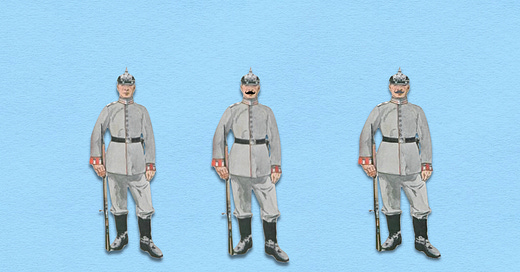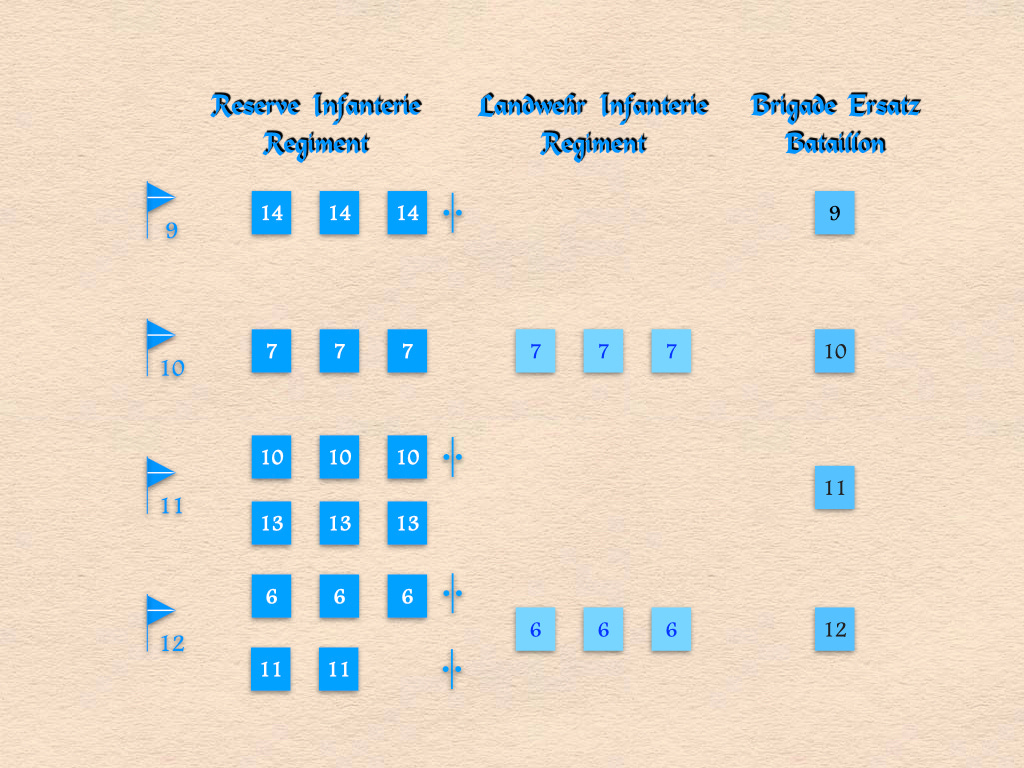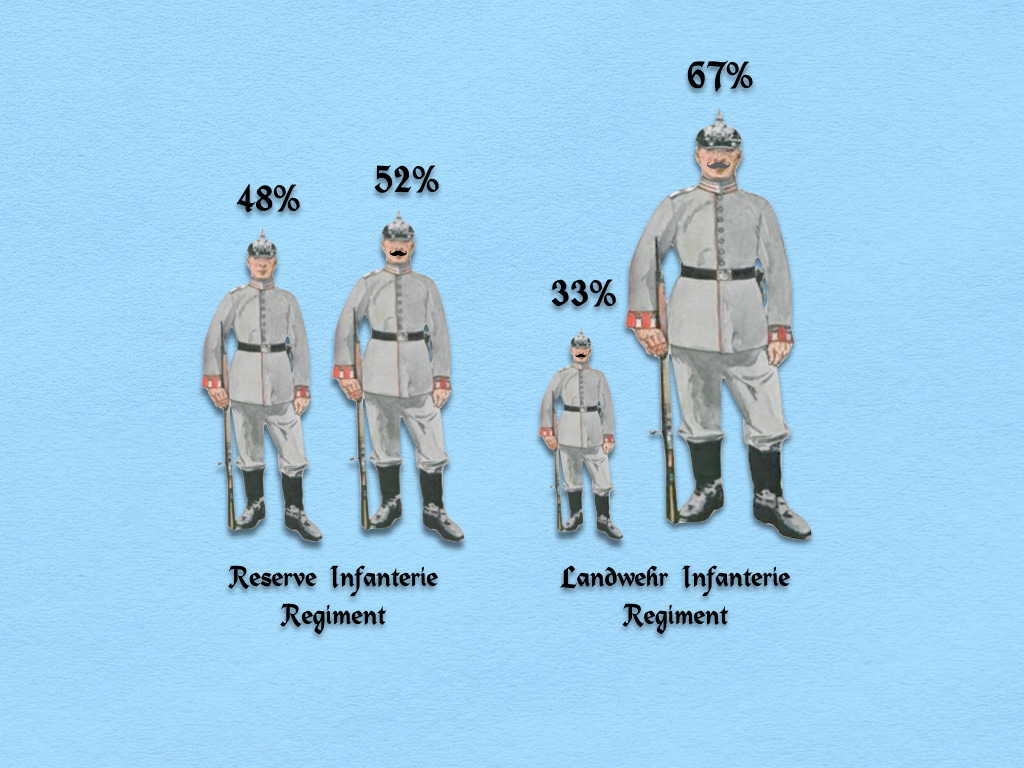The third of the three Bavarian army corps wins the prize for producing the largest number of Reserve infantry regiments. At a time when the ideal army corps produced four such units, the III Army Corps of the Royal Bavarian Army produced six such units. At the same time, the III Army Corps mobilized but two Landwehr infantry regiments.
This sort of imbalance was made possible by the way that the Bavarian Army (and, indeed, all of the armies of the German Empire) assigned reservists to units.
Each infantryman who had returned to civilian life after two years of full-time service belonged to a category that corresponded to a type of second-line unit. Men under the age of 27 were assigned to the “reserve of the standing army” [Reserve des stehende Heeres]. Men between the ages of 27 and 32 were members of the First Levy [erste Aufgebot] of the Landwehr. (This was also called Landwehr I.) In October of the year in which he turned 32, a reservist joined the Second Levy [zweite Aufgebot] of the Landwehr (Landwehr II), where he stayed until the 31st of March of his 39th year.1
One might think that, upon mobilization, men of the Reserve would be assigned to Reserve units while men of the Landwehr would go to Landwehr units. This, however, was not the case. Rather, the rank-and-file of Reserve units was composed of those men of the Reserve who had not found a place in active units and relatively young members of the First Levy of the Landwehr. Likewise, Landwehr units were composed of men of the First Levy of the Landwehr who had not been selected for service with Reserve units and men of the Second Levy of the Landwehr.
In second-line units of the Royal Bavarian Army, the proportion of men from each category varied considerably. Thus, the percentage of Landwehr I men in Reserve infantry regiments ranged from 39 to 62. Similarly, the percentage of Landwehr I men in Landwehr units could be as small as 17 and as great as 48.2
To put things another way, while the oldest reservists could only be assigned to Landwehr units, men between the ages of 27 and 32 might find themselves in either Reserve or Landwehr units. This, in turn, meant that the authors of plans for the mobilization of second-line infantry units within the III Army Corps could find enough men for five extra Reserve battalions by providing them with some of the men who might otherwise have served in Landwehr infantry battalions.3
Löbell's Jahresberichte über das Heer-und Kriegswesen [Löbell’s Military Matters and Warfare Annual], 1913, pages 12 and 13
Karl Deuringer, Die Schlacht in Lothringen und in den Vogesen 1914: Die Feuertaufe der Bayerischen Armee [The Battle in Lorraine and the Vosges, 1914: The Baptism of Fire of the Bavarian Army] (Munich: Max Schick, 1929), Volume I, page 19
The older men left over by this process would have been available for service in “immobile” Landwehr battalions formed at the start of the war. (These units, many of which were designated as the fourth battalions of otherwise “mobile” Landwehr infantry regiments, are not counted among the Landwehr units discussed in this series.)







